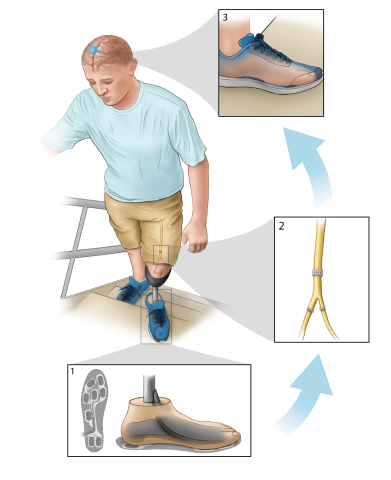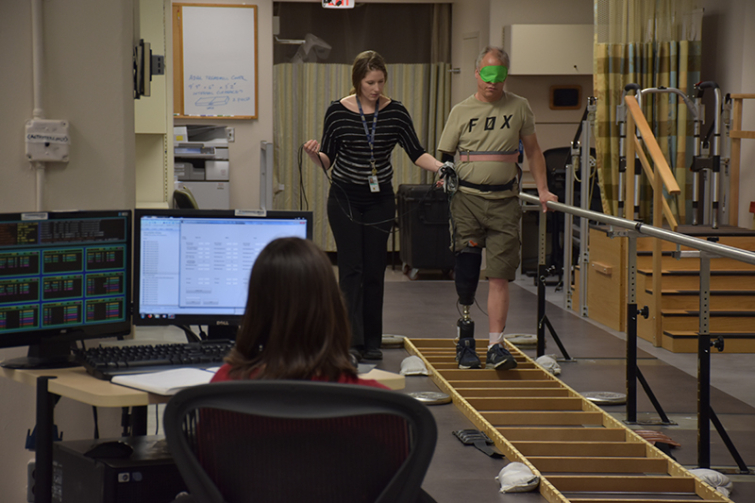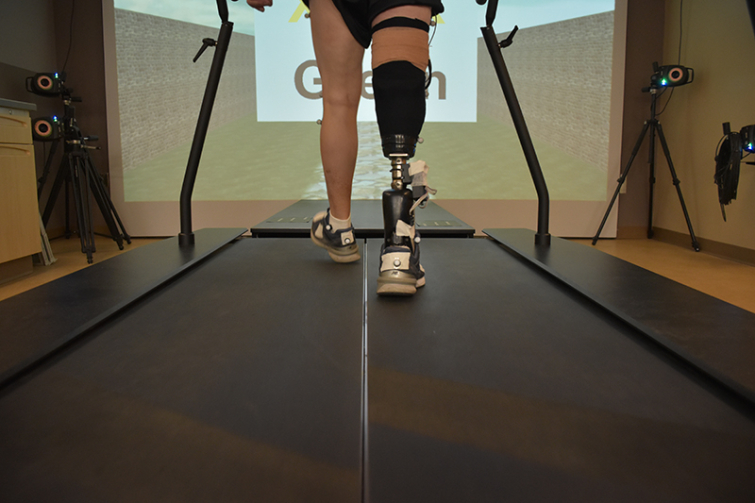Our work at the Restoring Lower Limb Neural Connection (ReLLiNC Lab) at Case Western Reserve University utilizes novel neural interface technology to interact with the nervous system of individuals with lower limb amputations. High-density nerve cuff electrodes are installed around the peripheral nerves in the residual limb. Electrical stimulation through these electrodes elicits sensations that are perceived as originating from the participant’s missing limb.
In one area of our work, this technology is incorporated into a sensory neuroprosthesis (illustrated on the right). An instrumented prosthesis detects and communicates the pressure profile applied to the prosthetic foot (1) and the electrical stimulation is adjusted to match (2). With this system, the participant feels sensations corresponding to the foot-floor interactions (3).
We are also working to restore intuitive control to the prosthesis users by interfacing with the remaining muscles in the leg. This is achieved by implanting intramuscular EMG recording electrodes within selected leg and hip muscles.
By interpreting and integrating muscle activity data with a robotic prosthesis, we can create a more intuitive way for users to control their artificial limbs. This leads to what we call a 'bidirectional neuroprosthesis', combining restored sensation of the foot with natural movement control. Through this reconnection of neural pathways, we can explore improvements in walking, balance, and the ability to handle uneven or challenging terrains. Ultimately, our goal is to enhance overall functionality and quality of life for prosthesis users.
We are also working on quantifying the impact this neural sensory stimulation can have on the health of the residual limb (i.e. if it can increase blood flow and oxygen perfusion) which is especially important for those with diabetes, peripheral neuropathy, or other vascular diseases.
Check out some videos about our project:
Check out some photos of our experiments below!
Participant performing a task to study if foot sensation can improve navigation of uneven terrain:
Stairs present a challenge to prosthesis users who often rely on vision to detect the edge of the stair and place their feet. We are studying whether restoring sensation can help people walk up and down stairs more safely.
We use an instrumented treadmill and a set of motion capture cameras to closely examine gait to understand whether foot sensation can improve walking stability, symmetry, and efficiency:
This system can also be combined with VR to simulate walking outside or in an enrironment like a grocery store or crowded hallway. This is helpful for understanding how sensation is integrated with vision and other cognitive processes like decision making.
Find out more about related neural engineering work done at the Advanced Platform Technology Center.







